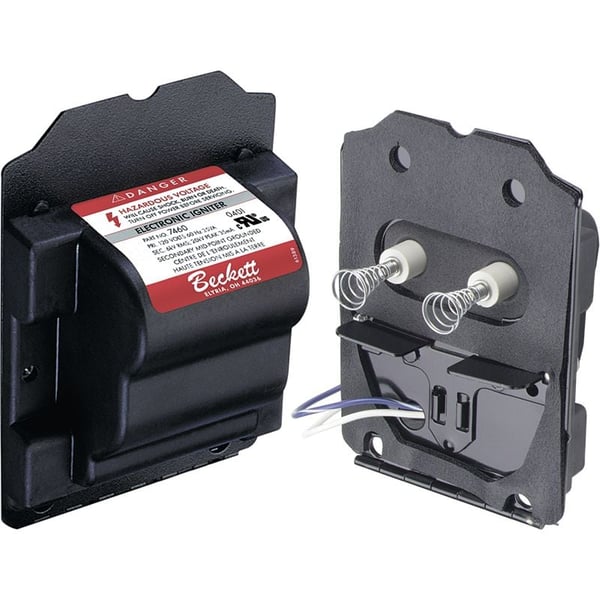Advancements and innovations in the heating industry are usually designed with a few goals in mind: improving efficiency, enhancing safety, and creating a more reliable and convenient heating system for the customer, to name a few. Combustion cycles don't start if there isn't a reliable source of ignition. That's where advancements have improved each of these goals with the use of an advanced ignition system.
As far as electronic igniters go, their technology was developed in order to improve on all these factors compared to the transformer based ignition that preceded them. In this post, we'll discuss the evolution of electronic heating igniters and the benefits that their development provided over the previous technology.
From Transformers to Igniters
Before the electronic, solid state igniter became the general standard in the industry, most systems used transformers to generate the energy that served as the ignition source. In a transformer, two electromagnetic coils of wire are used to create energy through induction currents. When the primary coil receives voltage from the power source an electromagnetic force is created, causing electrons from that coil begin to flow. The electromagnetic force induces electrons in the secondary coil to flow, creating a "stepped up" current from the secondary coil, in turn creating the ignition arc across the electrode gap. This arc connects the circuit between the primary input and the secondary output, producing ignition for the heating system.
However, in order to produce enough energy across the arc, several conditions must be met. First, there is a critical dimension between the two electrodes that allows the proper flow of current across the gap. If the gap is too wide or too short, the transformer won't provide the right amount of power to ignite the fuel. Additionally, the secondary coil must reach the correct voltage in order to light. Because of the transformer's design, the strength of the voltage from the secondary output is proportional to the input of the primary coil. This means that if voltage is interrupted or too low at the primary, the voltage will also be too low at the secondary to produce ignition. Transformers tend to be fairly susceptible to electrical interference and interruption, which can cause a lot of delayed or failed ignitions using this technology.
For these reasons, manufacturers began to develop a better, more dependable component for ignition: the solid state igniter.
 |
| Click here to learn more about the PowerLight Electronic Oil Igniter from Beckett. |
The Evolution of Solid State Igniters
The electronic, solid state igniter that's commonly used in the heating industry today solves many of the problems experienced by transformers. First, today's igniters use a solid state board to transfer electricity between the primary input and the secondary output. Characteristics of the current, specifically frequency and amplitude, are changed through the use of solid state circuitry. Using the solid state board allows us to monitor and change the characteristic of the voltage on the board before it flows to the secondary coil. A stronger, more consistent output circuit, powerful enough for reliable ignition over varied primary voltage is the result. The benefit of this technology is that if input voltage drops, the output isn't affected like it would be in a transformer. Reliable ignition is still provided, even during a voltage change created by frequent brownouts from the electrical grid or unpredictable high amperage draws on the burner circuit.
Due to limited voltage influence, solid state igniters provide a more robust arc and more reliable ignition than a transformer could. Therefore, electronic heating igniters experience fewer intermittent failures caused by brownouts due to voltage drops or interference. Additionally, electronic igniters are also lighter and less bulky, making it easier for technicians to transport and service them when necessary. Thanks to the solid state igniter, more customers than ever have more reliable access to efficient gas and oil heat in their homes and facilities.


